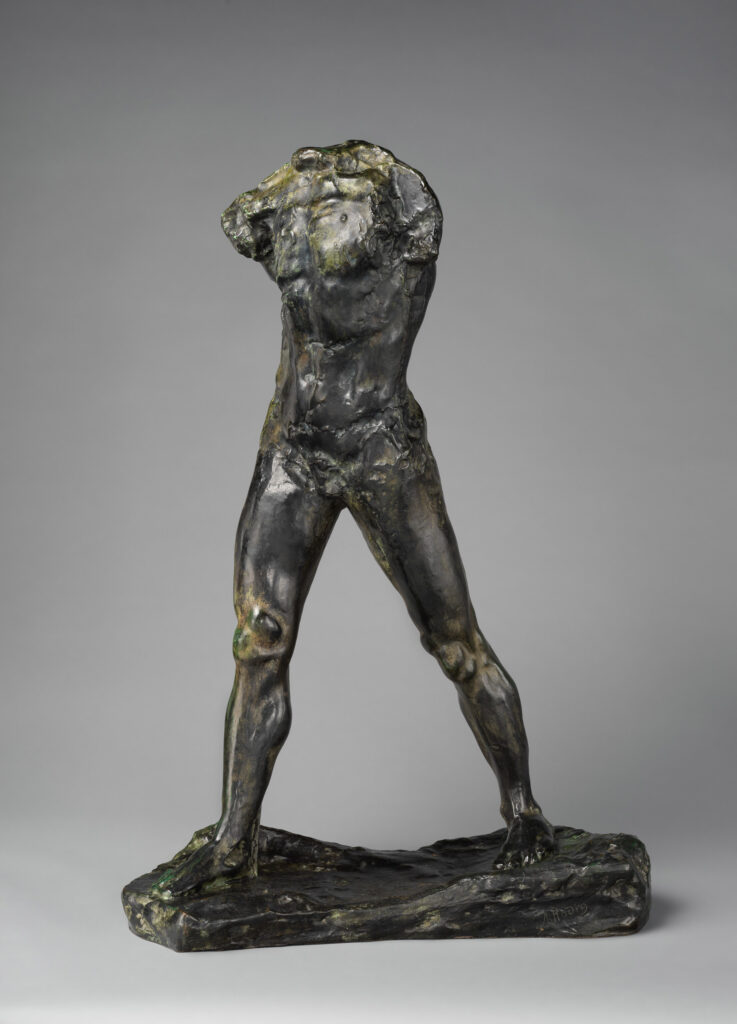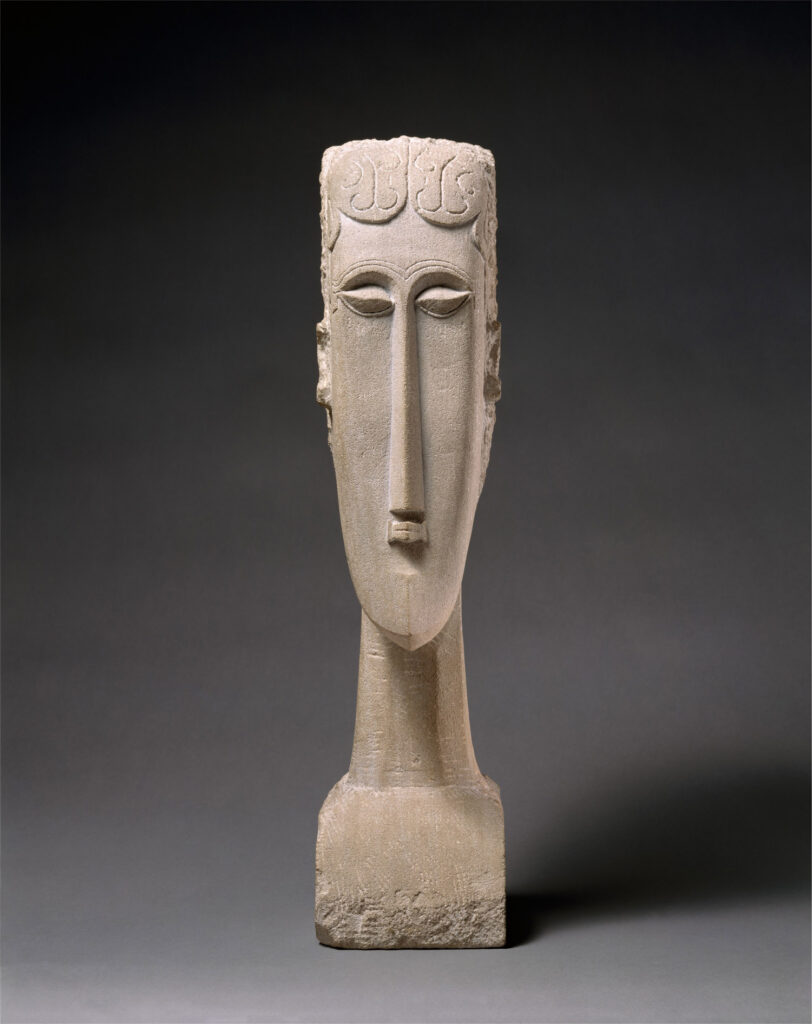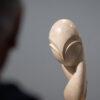Modern, abstract sculpture as we know it today is a relatively “new” form of expression in the long history of art. At the same time, however, it is a defining example of the profound changes that art underwent at that time.
From the Renaissance to the 19th century, painting enjoyed a dominant position in the visual arts. As a result, sculpture often took a back seat and was often limited to the production of busts and garden sculptures.1 However, this originally predominant, idealized and figurative representation of human forms changed significantly at the beginning of the 20th century.
Until then, works of art had primarily served to depict the visible world, but at this time a phase of exploration and research began. Artists broke with traditional conventions and now strove for a new visual language. A language that was geared towards capturing the essence of form.
But what made the artists of the time change their way of expression so drastically? What were their influences? And how did this change our perception of art today?
From traditional ideal to pure essence
To answer these complex questions, it is necessary to take a comprehensive look at the historical, social and philosophical contexts that influenced and inspired the artists of this period.
The beginning of the 20th century was a time of upheaval. Scientific discoveries, socio-political revolutions and, in particular, the rapid progress of industrialization had radically changed the way of life of many people. Increasing urbanization and the growth of the middle class gradually led to a democratization of art. It was no longer produced solely for the church or the nobility, but found a new group of buyers in the emerging middle class.2 With the invention of new technologies, such as photography, the art market continued to change.3
New philosophical movements, such as phenomenology, were also very popular at the time. Scientific findings such as Einstein’s theory of relativity and quantum mechanics shattered traditional philosophical thinking and led to an entirely new world view.
All these influences were also reflected in visual art. Artists began to experiment more and more, breaking away from traditional paths and thus marking the beginning of modernism in art. Today, Auguste Rodin is regarded as one of the most pioneering sculptors of modernism. Even though his works were not known for their abstraction, he was one of the first to break with traditional sculptural conventions and turned away from the idealized aesthetics of Ancient Greece. Instead, he focused on the expression of character and emotion through a detailed depiction of the human body (fig. 1).4
From 1906, artists such as Pablo Picasso and Georges Braque developed styles such as (proto-)cubism, which broke away from realistic representation for the first time. The desire to depict form and space in a way other than through classical perspective was one of the key aspects of Cubism. They not only developed a new type of painting, but also sculptures that were more geometric, abstract and fragmented. They thus revealed the multidimensionality of reality and opened up a new, more holistic view of the object.


The rediscovered interest in prehistoric art and non-Western art – for example African and Oceanic art – also played an important role in this change. But it was not only the artists of Cubism who were inspired by the reduced, stylistic expressiveness of these artifacts. (if you are interested in this topic, I recommend my article: Is Cycladic Art The Origin Of Minimalist Aesthetics? in which I specifically discuss the inspiration of prehistoric Cycladic idols on modern artists such as Brâncuși, Hepworth, Giacometti and more.)
Artists such as Amedeo Modigliani, Constantin Brâncuși and Alexander Archipenko also strove for a simplified form and found inspiration in prehistoric sculptures. Constantin Brâncuși, often referred to as a pioneer of modern sculpture, abstracted his works from around 1907 after working for a few weeks as an assistant to Auguste Rodin. His famous sculpture “The Kiss” from 1907/1908 is an early example of his tendency towards abstraction. It shows a pair of lovers in a simplified form that emphasizes the concept of fusion and unity without depicting either body in detail.
Abstraction as a new artistic language
Constructivism was the first movement to completely break away from the representational and therefore had a significant influence on the development of modern sculpture.5,6 It emerged in Russia around 1915 and aimed to reflect the new, modern and industrialized society in art. In sculpture, artists increasingly replaced traditional materials such as marble and bronze with non-traditional materials such as glass or metal.
Experimenting with such materials expanded the spectrum of sculptural possibilities and enabled them to find completely new forms of expression.7 One of the co-founders of Constructivism, Vladimir Tatlin, was strongly influenced by Cubism and developed his own style from it, inspiring many other artists of the time.
From 1920 onwards, many artists developed their own interpretation of abstract sculpture. Alberto Giacometti, for example, worked intensively on post-cubist sculpture between 1925 and 1929. During these so-called “avant-garde years”, he was strongly influenced by artists such as Brâncuși and Lipchitz.8 He also found inspiration in prehistoric and non-Western artifacts. Works such as “Torse” from 1925-1926 and “Tête qui regarde” from 1928 embody Giacometti’s explorative phase on his path to his own reduced style.8
If you like this article, consider subscribing to the monthly newsletter and stay up to date with new inspirations, editorials, interviews, current exhibitions and more.
Other artists, such as Henry Moore, Barbara Hepworth and Jean (Hans) Arp, were inspired by nature and experimented with organic and biomorphic forms. Moore’s works are characterized by rounded shapes that represent the human form in its most basic form. His work ‘Composition‘ from 1931 was the first to show complete abstraction of form. For him, this work represented an “important stage in the development of his sculpture”.9 Barbara Hepworth, a contemporary and friend of Henry Moore, shared his admiration for nature. She developed her own aesthetic language, always in search of harmony and balance, and thus became one of the most important artists in British modern sculpture.
Each developed their own language and yet they were all united by the desire for a new form of artistic expression. And in doing so, they paved the way for a new understanding of sculpture.
As the 20th century progressed, many artists from a wide range of art movements were inspired by the legacy of these pioneers of sculpture, including Donald Judd, Tony Smith, Alexander Calder, Eduardo Chillida and Richard Serra. Today, their works exemplify the innovative development and infinite possibilities of abstract sculpture.
Further Reading / Resources
- Museum of Modern Art (New York, N.Y.), Sculpture of the twentieth century, 1952, p. 6, link
- https://st-artamsterdam.com/industrial-revolution-the-influence-on-art/
- https://en.wikipedia.org/wiki/1900s
- https://en.wikipedia.org/wiki/Auguste_Rodin
- https://www.tate.org.uk/art/art-terms/c/constructivism
- https://de.wikipedia.org/wiki/Bildhauerkunst#Das_20._Jahrhundert
- http://www.visual-arts-cork.com/abstract-sculpture.htm
- https://www.giacometti-stiftung.ch/en/alberto-giacometti/creative-phases/avant-garde/
- https://henry-moore.org/discover-and-research/discover-henry-moore/timeline/#timeline-group-1929
- https://en.wikipedia.org/wiki/Modern_sculpture
- Gombrich, E. H. The Story of Art, Phaidon Press, 2019.
Title image was created with Midjourney.

